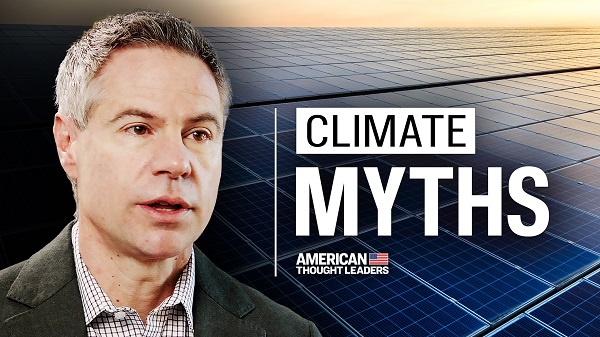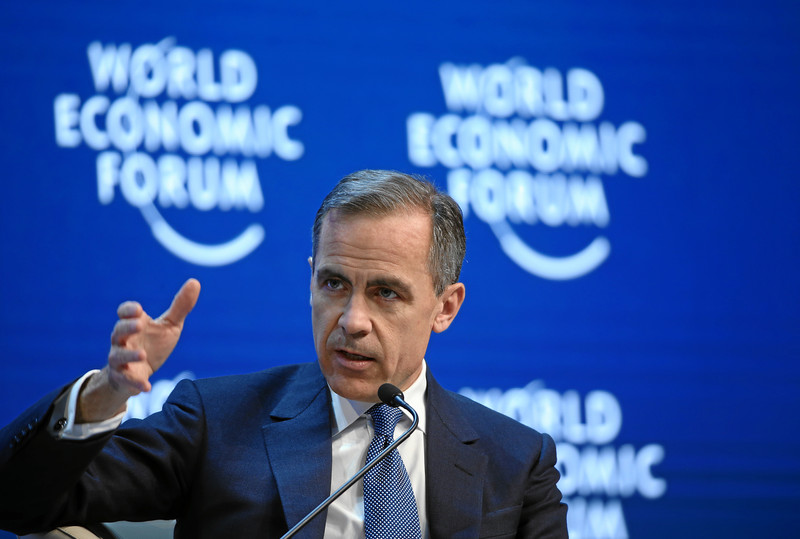Canadian Energy Centre
Emissions cap will end Canada’s energy superpower dream

From the Canadian Energy Centre
By Will Gibson
Study finds legislation’s massive cost outweighs any environmental benefit
The negative economic impact of Canada’s proposed oil and gas emissions cap will be much larger than previously projected, warns a study by the Center for North American Prosperity and Security (CNAPS).
The report concluded that the cost of the emissions cap far exceeds any benefit from emissions reduction within Canada, and it could push global emissions higher instead of lower.
Based on findings this March by the Office of the Parliamentary Budget Officer (PBO), CNAPS pegs the cost of the cap to be up to $289,000 per tonne of reduced emissions.
That’s more than 3,600 times the cost of the $80-per-tonne federal carbon tax eliminated this spring.
The proposed cap has already chilled investment as Canada’s policymakers look to “nation-building” projects to strengthen the economy, said lead author Heather Exner-Pirot.
“Why would any proponent invest in Canada with this hanging over it? That’s why no other country is talking about an emissions cap on its energy sector,” said Exner-Pirot, director of energy, natural resources and environment at the Macdonald-Laurier Institute.
Federal policy has also stifled discussion of these issues, she said. Two of the CNAPS study’s co-authors withdrew their names based on legal advice related to the government’s controversial “anti-greenwashing” legislation.
“Legitimate debate should not be stifled in Canada on this or any government policy,” said Exner-Pirot.
“Canadians deserve open public dialogue, especially on policies of this economic magnitude.”
Carbon leakage
To better understand the impact of the cap, CNAPS researchers expanded the PBO’s estimates to reflect impacts beyond Canada’s borders.
“The problem is something called carbon leakage. We know that while some regions have reduced their emissions, other jurisdictions have increased their emissions,” said Exner-Pirot.
“Western Europe, for example, has de-industrialized but emissions in China are [going up like] a hockey stick, so all it’s done is move factories and plants from Europe to China along with the emissions.”
Similarly, the Canadian oil and gas production cut by the cap will be replaced in global markets by other producers, she said. There is no reason to assume capping oil and gas emissions in Canada will affect global demand.
The federal budget office assumed the legislation would reduce emissions by 7.1 million tonnes. CNAPS researchers applied that exclusively to Canada’s oil sands.
Here’s the catch: on average, oil sands crude is only about 1 to 3 percent more carbon-intensive than the average crude oil used globally (with some facilities emitting less than the global average).
So, instead of the cap reducing world emissions by 7.1 million tonnes, the real cut would be only 1 to 3 percent of that total, or about 71,000 to 213,000 tonnes worldwide.
In that case, using the PBO’s estimate of a $20.5 billion cost for the cap in 2032, the price of carbon is equivalent to $96,000 to $289,000 per tonne.
Economic pain with no environmental gain
Exner-Pirot said doing the same math with Canada’s “conventional” or non-oil sands production makes the situation “absurd.”
That’s because Canadian conventional oil and natural gas have lower emissions intensity than global averages. So reducing that production would actually increase global emissions, resulting in an infinite price per tonne of carbon.
“This proposal creates economic pain with no environmental gain,” said Samantha Dagres, spokesperson for the Montreal Economic Institute.
“By capping emissions here, you are signalling to investors that Canada isn’t interested in investment. Production will move to jurisdictions with poorer environmental standards as well as bad records on human rights.”
There’s growing awareness about the importance of the energy sector to Canada’s prosperity, she said.
“The public has shown a real appetite for Canada to become an energy superpower. That’s why a June poll found 73 per cent of Canadians, including 59 per cent in Quebec, support pipelines.”
Industries need Canadian energy
Dennis Darby, CEO of Canadian Manufacturers & Exporters (CME), warns the cap threatens Canada’s broader economic interests due to its outsized impact beyond the energy sector.
“Our industries run on Canadian energy. Canada should not unnecessarily hamstring itself relative to our competitors in the rest of the world,” said Darby.
CME represents firms responsible for over 80 per cent of Canada’s manufacturing output and 90 per cent of its exports.
Rather than the cap legislation, the Ottawa-based organization wants the federal government to offer incentives for sectors to reduce their emissions.
“We strongly believe in the carrot approach and see the market pushing our members to get cleaner,” said Darby.
Alberta
How economic corridors could shape a stronger Canadian future

Ship containers are stacked at the Panama Canal Balboa port in Panama City, Saturday, Sept. 20, 2025. The Panama Canals is one of the most significant trade infrastructure projects ever built. CP Images photo
From the Canadian Energy Centre
Q&A with Gary Mar, CEO of the Canada West Foundation
Building a stronger Canadian economy depends as much on how we move goods as on what we produce.
Gary Mar, CEO of the Canada West Foundation, says economic corridors — the networks that connect producers, ports and markets — are central to the nation-building projects Canada hopes to realize.
He spoke with CEC about how these corridors work and what needs to change to make more of them a reality.
CEC: What is an economic corridor, and how does it function?
Gary Mar: An economic corridor is a major artery connecting economic actors within a larger system.
Consider the road, rail and pipeline infrastructure connecting B.C. to the rest of Western Canada. This infrastructure is an important economic corridor facilitating the movement of goods, services and people within the country, but it’s also part of the economic corridor connecting western producers and Asian markets.
Economic corridors primarily consist of physical infrastructure and often combine different modes of transportation and facilities to assist the movement of many kinds of goods.
They also include social infrastructure such as policies that facilitate the easy movement of goods like trade agreements and standardized truck weights.
The fundamental purpose of an economic corridor is to make it easier to transport goods. Ultimately, if you can’t move it, you can’t sell it. And if you can’t sell it, you can’t grow your economy.
CEC: Which resources make the strongest case for transport through economic corridors, and why?
Gary Mar: Economic corridors usually move many different types of goods.
Bulk commodities are particularly dependent on economic corridors because of the large volumes that need to be transported.
Some of Canada’s most valuable commodities include oil and gas, agricultural commodities such as wheat and canola, and minerals such as potash.
CEC: How are the benefits of an economic corridor measured?
Gary Mar: The benefits of economic corridors are often measured via trade flows.
For example, the upcoming Roberts Bank Terminal 2 in the Port of Vancouver will increase container trade capacity on Canada’s west coast by more than 30 per cent, enabling the trade of $100 billion in goods annually, primarily to Asian markets.
Corridors can also help make Canadian goods more competitive, increasing profits and market share across numerous industries. Corridors can also decrease the costs of imported goods for Canadian consumers.
For example, after the completion of the Trans Mountain Expansion in May 2024 the price differential between Western Canada Select and West Texas Intermediate narrowed by about US$8 per barrel in part due to increased competition for Canadian oil.
This boosted total industry profits by about 10 per cent, and increased corporate tax revenues to provincial and federal governments by about $3 billion in the pipeline’s first year of operation.
CEC: Where are the most successful examples of these around the world?
Gary Mar: That depends how you define success. The economic corridors transporting the highest value of goods are those used by global superpowers, such as the NAFTA highway that facilitates trade across Canada, the United States and Mexico.
The Suez and Panama canals are two of the most significant trade infrastructure projects ever built, facilitating 12 per cent and five per cent of global trade, respectively. Their success is based on their unique geography.
Canada’s Asia-Pacific Gateway, a coordinated system of ports, rail lines, roads, and border crossings, primarily in B.C., was a highly successful initiative that contributed to a 48 per cent increase in merchandise trade with Asia from $44 million in 2006 to $65 million in 2015.
China’s Belt and Road initiative to develop trade infrastructure in other countries is already transforming global trade. But the project is as much about extending Chinese influence as it is about delivering economic returns.

Piles of coal awaiting export and gantry cranes used to load and unload containers onto and from cargo ships are seen at Deltaport, in Tsawwassen, B.C., on Monday, September 9, 2024. CP Images photo
CEC: What would need to change in Canada in terms of legislation or regulation to make more economic corridors a reality?
Gary Mar: A major regulatory component of economic corridors is eliminating trade barriers.
The federal Free Trade and Labour Mobility in Canada Act is a good start, but more needs to be done at the provincial level to facilitate more internal trade.
Other barriers require coordinated regulatory action, such as harmonizing weight restrictions and road bans to streamline trucking.
By taking a systems-level perspective – convening a national forum where Canadian governments consistently engage on supply chains and trade corridors – we can identify bottlenecks and friction points in our existing transportation networks, and which investments would deliver the greatest return on investment.
Alberta
Alberta’s number of inactive wells trending downward

Aspenleaf Energy vice-president of wells Ron Weber at a clean-up site near Edmonton.
From the Canadian Energy Centre
Aspenleaf Energy brings new life to historic Alberta oil field while cleaning up the past
In Alberta’s oil patch, some companies are going beyond their obligations to clean up inactive wells.
Aspenleaf Energy operates in the historic Leduc oil field, where drilling and production peaked in the 1950s.
In the last seven years, the privately-held company has spent more than $40 million on abandonment and reclamation, which it reports is significantly more than the minimum required by the Alberta Energy Regulator (AER).
CEO Bryan Gould sees reclaiming the legacy assets as like paying down a debt.
“To me, it’s not a giant bill for us to pay to accelerate the closure and it builds our reputation with the community, which then paves the way for investment and community support for the things we need to do,” he said.
“It just makes business sense to us.”
Aspenleaf, which says it has decommissioned two-thirds of its inactive wells in the Leduc area, isn’t alone in going beyond the requirements.
Producers in Alberta exceeded the AER’s minimum closure spend in both years of available data since the program was introduced in 2022.
That year, the industry-wide closure spend requirement was set at $422 million, but producers spent more than $696 million, according to the AER.
In 2023, companies spent nearly $770 million against a requirement of $700 million.
Alberta’s number of inactive wells is trending downward. The AER’s most recent report shows about 76,000 inactive wells in the province, down from roughly 92,000 in 2021.
In the Leduc field, new development techniques will make future cleanup easier and less costly, Gould said.
That’s because horizontal drilling allows several wells, each up to seven kilometres long, to originate from the same surface site.
“Historically, Leduc would have been developed with many, many sites with single vertical wells,” Gould said.
“This is why the remediation going back is so cumbersome. If you looked at it today, all that would have been centralized in one pad.
“Going forward, the environmental footprint is dramatically reduced compared to what it was.”

During and immediately after a well abandonment for Aspenleaf Energy near Edmonton. Photos for the Canadian Energy Centre
Gould said horizontal drilling and hydraulic fracturing give the field better economics, extending the life of a mature asset.
“We can drill more wells, we can recover more oil and we can pay higher royalties and higher taxes to the province,” he said.
Aspenleaf has also drilled about 3,700 test holes to assess how much soil needs cleanup. The company plans a pilot project to demonstrate a method that would reduce the amount of digging and landfilling of old underground materials while ensuring the land is productive and viable for use.

Crew at work on a well abandonment for Aspenleaf Energy near Edmonton. Photo for the Canadian Energy Centre
“We did a lot of sampling, and for the most part what we can show is what was buried in the ground by previous operators historically has not moved anywhere over 70 years and has had no impact to waterways and topography with lush forestry and productive agriculture thriving directly above and adjacent to those sampled areas,” he said.
At current rates of about 15,000 barrels per day, Aspenleaf sees a long runway of future production for the next decade or longer.
Revitalizing the historic field while cleaning up legacy assets is key to the company’s strategy.
“We believe we can extract more of the resource, which belongs to the people of Alberta,” Gould said.
“We make money for our investors, and the people of the province are much further ahead.”
-

 espionage2 days ago
espionage2 days agoChinese-Owned Trailer Park Beside U.S. Stealth Bomber Base Linked to Alleged Vancouver Repression Case
-

 Daily Caller2 days ago
Daily Caller2 days agoLaura Ingraham Presses Trump On Allowing Flood Of Chinese Students Into US
-

 Daily Caller2 days ago
Daily Caller2 days agoUS Nuclear Bomber Fleet Shares Fence With Trailer Park Linked To Chinese Intel-Tied Fraudster
-

 Crime2 days ago
Crime2 days agoCBSA Bust Uncovers Mexican Cartel Network in Montreal High-Rise, Moving Hundreds Across Canada-U.S. Border
-

 Environment2 days ago
Environment2 days agoThe Myths We’re Told About Climate Change | Michael Shellenberger
-

 COVID-192 days ago
COVID-192 days agoSpy Agencies Cozied Up To Wuhan Virologist Before Lying About Pandemic
-

 MAiD21 hours ago
MAiD21 hours agoQuebec has the highest euthanasia rate in the world at 7.4% of total deaths
-

 Business2 days ago
Business2 days agoCarney and other world leaders should recognize world’s dependence on fossil fuels







